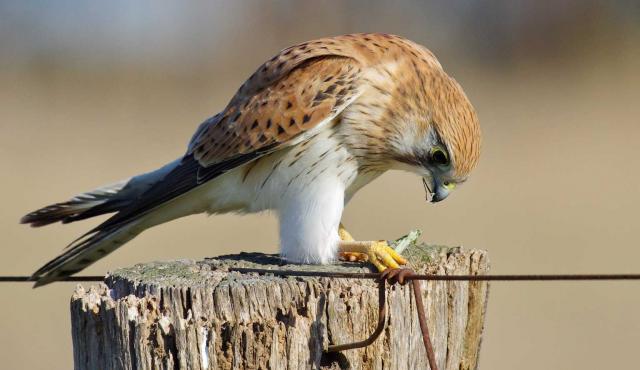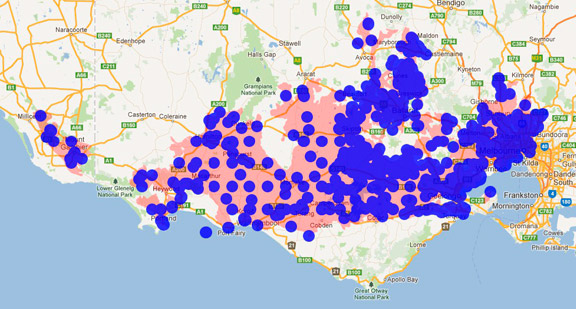A range of teacher professional learning programs will be developed to accompany the Biodiversity of the Western Volcanic Plains online outreach...

Nankeen Kestrel
Falco cenchroides
Breeds August-December. Nankeen Kestrels hover above open pastures whilst hunting, looking to catch rodents below in the grass. In grasslands of the south, established pairs are resident year round. Three to seven eggs are laid in late winter and incubated by the female alone. Hatching takes place after 26 to 28 days, with the male bringing food to the female. Multiple broods are raised in good seasons.
| Details | Description |
| Type | Bird |
| Group | Raptor |
| Identifying Characteristics | |
| Distinctive Markings | Black 'teardrop' through eye, rounded black edge on tail. Slim build, small size and distinctive straight-winged hovering habit. |
| Diet | Carnivore. Eats mainly insects but also small birds, reptiles and mice. |
| Habitat | Occurs in open grasslands, woodlands, croplands and urban areas. |
| Native Status | Native to Australia |
| Sounds | A shrilll, rapid "keekeekeekeekee" and wavering "keer, keer, keer". |
| Taxonomy | |
| Phylum | Chordata |
| Class | Aves |
| Order | Falconiformes |
| Family | Falconidae |
| Genus | Falco |
| Species | cenchroides |

Distribution maps indicate current and historic locations where species have been sighted.
Source: Atlas of Living Australia
| Conservation Status | |
| DEPI Advisory List | Not listed |
| FFG Act | Not listed |
| EPBC Act | Not listed |
The conservation status of species is listed within Victoria and Australia.
The Department of Environment and Primary Industry (DEPI) Advisory List consists of non-statutory advisory lists of rare or threatened flora and fauna within Victoria.
The Flora and Fauna Guarantee Act 1988 (FFG Act) lists threatened species in Victoria. Under the Act, an Action Statement is produced for each listed species.
The Environment Protection and Biodiversity Conservation Act 1999 (EPBC Act) is the Australian Government’s key piece of environmental legislation, listing nationally threatened native species and ecological communities.



